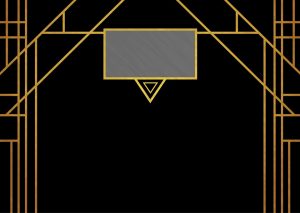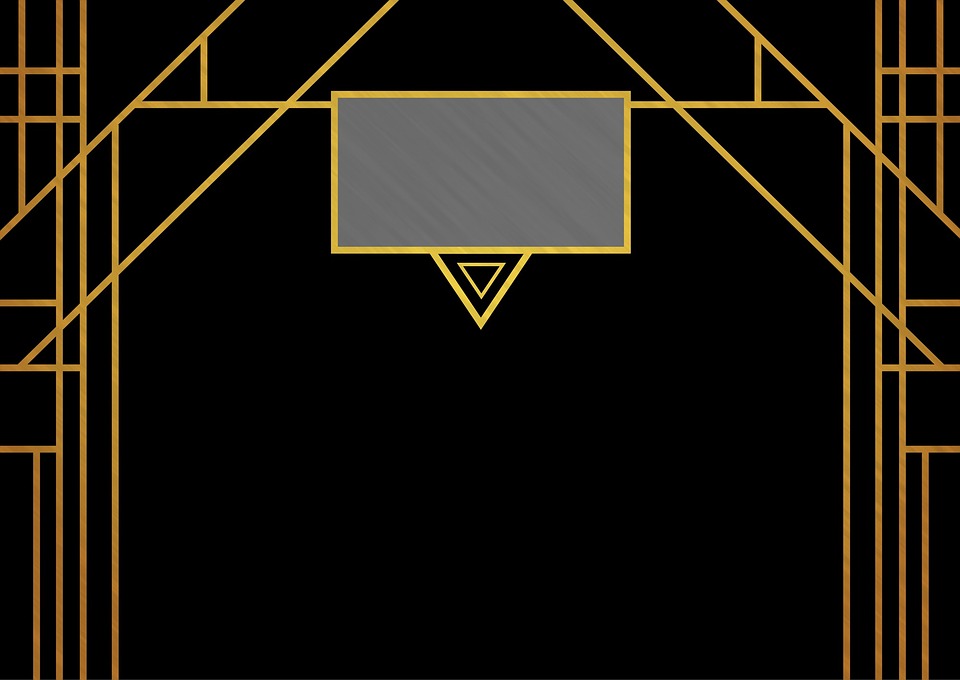Some Updated Thoughts on Art Deco Interior Design
The unpredictable collision of completely distinct elements is what encapsulates the marvels of eclecticism. The earth is filled with strange varieties of flora and fauna, vast deserts and diverse rain forests as well as bucolic surroundings and urban landscapes yet its life is sustained and its growth is unceasing. Every little thing in this planet coincides with each other resulting to a magnificent spectacle of natural beauty hence, the earth can be considered as one of the quintessential representations of the success of diversified combinations, the symbol of the marvelous eclectic. Just as a branch of a tree is part of the whole, a home is a silk thread in the gigantic web we call earth and what applies to the much larger dwelling of mankind will also be fruitful for a smaller home of the family.
Most grand architectures of colossal proportions and interior designs of a smaller and more intimate scale originated from different realms of the human mind but they are cohesive when planned and executed. However, rare occurrence and extraordinary ideas can sometimes give birth to refreshing and innovative creations unparalleled for their harmonious multiplicity. The fascinating becomes adored and eventually adapted which is what happened with the success of the Art Deco style. With its emergence, the adjective eclectic finally found the most fitting subject to describe.
Eclecticism in the realm of the creative
The art world welcomed the birth of a genuinely distinctive style in architecture and visual arts during the 1st quarter of the 20th century. Art Deco style astounded the artistic community when it was exhibited in the Exposition Internationale des Arts Décoratifs et Industriels Modernes in Paris in the year 1925. The exclusive territory of the brilliant and the creative has never experienced a refreshing interplay of various elements such as this because prior to its emergence, art styles have been predictably constant and consistent. The Art Noveau period showcased a grandiose masterpiece of every curving form swirling and intermingling with each other which produced captivatingly intense movement and fluidity. Art Deco graciously interrupted that period’s nostalgic existence and brought about contained art forms that were not at all customary but incredibly unique and unexpected. The most renowned and ingenious artists and designers composed of Jean Dunand, Jacques-Emile Ruhlmann, Edgar Brandt, Jean-Jacques Rateau, Eileen Gray, René Lalique and other prominent movers and shakers of the art circle were the successful proponents of this lavish and glamorous style. However, its name Art Deco wasn’t officially used during the 1920s. It was only introduced when the historian Bevis Hillier had a book published on 1968 about it, entitled the Art Deco of the 20s and 30s. Historically, its famous luster was diminished during the period between the latter part of the 1920s and the first part of the 1940s but fortunately experienced a rebirth when Hillier’s book was published. One of the most famous architecture that embraced the Art Deco style was the Chrysler building in New York. With the stylized and cleverly manipulated sunburst design of its tall spire, repetitive arch-shaped design and stainless steel exterior, it stands mightily as the best example of Art Deco architecture in the world.
Art Deco design characteristics
Art deco gathered its components in the most extreme of origins. It is only in this unique style of decorating can one see the juxtaposition of a multitude of design elements coming from the fascinating Egyptian and Assyrian period, classical features of Greek and Roman arts and architecture, and the opulent design flavors of Africa and Mexico. It is truly a grand phenomenon how these elements came together and collided magnificently. Extremely singular motifs such as geometric and subtle curvilinear forms and shapes were utilized in interior and furniture design. The repeated chevron patterns on the flooring materials, as well as the Egyptian fretworks in decorative interior screens and wallpapers spell Art Deco in its most visible appearance. Sunbursts, ziggurat, trapezoids and other polygonal shapes are just some of the various motifs incorporated in interior furnishings and accessories in the house. The gates, doors and windows that were designed when this style was popular tended to be intricately detailed with a repetition of these motifs as well as diamonds, curves, overlapping fans and arch shapes. They were made from glass and wrought iron framed in wood.
The latter part of the period that generated the Art Deco style launched a new component to its already diverse world. The fresh design ideas were injected with a streamlined effect evident in modern motifs such as elements of aviation, skyscraper buildings and ocean liners. Thus, modern materials such as stainless steel, aluminum and lacquer were introduced.
Furniture in the Art Deco style
If there is one aspect in the Art deco style where eclecticism is successfully depicted, it would have to be in furniture design. Upon seeing the diversity of materials and patterns of the furniture pieces designed in this style, one can easily mistake items to be from a specific design period such as Neoclassic, Egyptian or Mexican because of their particular derivations from these art periods. Perhaps, the revealed secret of the Art Deco style is the unexpected possibility of beauty that these varying elements can conjure up when they are combined.
Art deco furniture commonly uses inlaid wood with glossy and reflective finishes. Their coffee tables, dining and corner tables have inverted arch-shaped bases that are raised in a rectangular platform. The surfaces were mostly rounded and in the case of foyer and console tables, semi-circles. The shiny wood marquetry on the top surface and the body of the tables is stunning and eye-catching. Art Deco console and display cabinets used similar wood marquetry and they were mostly circular in shape. The polygonal shaped cabinets incorporated inverted trapezoidal forms. Most armchairs had continuous semi-circular arms to back shape that utilized wood and fabric upholstery. The Art Deco mahogany leaf back boudoir chairs were exceptional in silhouette and they were very attractive when two pieces were paired together. Just as a pair of Parquetry style chair in zebra print is captivating to look at. An individual club chair that is fully upholstered with leather, designed in the 1930s is a classic Art Deco piece that showcases masculine simplicity. Such ingenuity conceived and displayed is what makes these furniture pieces remarkable and sought after even in today’s modern interior designs.
Art deco lighting
Art deco chandeliers and wall lamps were designed to take a center stage in an interior space. They had magnificent gold and silver ensemble with opaque glass concealing the light bulbs. The designs were extravagant and awe-inspiring with fancy crystals in multiple drop layers forming the most exquisite patterns. Rene Lalique’s designs were phenomenal and inclined towards the creative rather than the reinventions of the classical. The pendant lights, wall and floor lamps of this style used interesting and attractive motifs such as shells, fans, lotuses and sunbursts. These lighting fixtures were highly decorative and their designs were as diverse as the furniture designs of this period.
Art deco accessories and adornments
Beautiful sculptural vases by the Swiss-born artist Jean Dunand are great decors for a modern interior that aims to adapt the Art Deco style. The vases of this period made use of enameled glass, malachite, frosted colored glass and ivory materials that produced a variety of designs that are almost too undistinguishable to have belonged to the period. Iron Art Deco mirrors, however, were identifiable designs with polygonal shaped frames and elaborate scroll-work detailing. Paired with marble topped console tables with similar iron bases, they stand out in a room with classical style sofas and armchairs. Mahogany wood framed mirror cabinets as well as wrought-iron pedestal mirrors with gold leaf details are equally successful in representing the Art Deco style. The wide assortments of ornate screens of this style period are quite splendid in designs and silhouettes. Three paneled folding screens with iron details are wonderful accessories for the bedroom and living room especially since they have the most interesting patterns of rippling circles, endless frets, continuous diamonds and stylized images of Egyptian landscapes and mythical deities of Greece and Rome.
Art Deco style incorporated in modern interiors involve a manageable process of applying distinct elements of this style and matching them with simple and contemporary furniture pieces of today. The elements included here are already eclectic in nature thus adding them to other bolder and conspicuous designs from different style periods will be excessive and inappropriate. A balance of style combinations and an adept talent for editing designs is needed for the job. The combination of very attractive Art Deco accent armchairs in a living room with a tastefully feminine style can match fully upholstered and floral patterned Neoclassical or Victorian sofas and chaise lounges. Their designs offer a pleasingly unique appeal to the interior which asserts eclecticism as a beautiful interior design style. Art Deco iron mirrors can complement a Rococo Revival inspired living room and the elaborate chandeliers can provide a sense of sophistication and glamour in a magnificent octagon shaped foyer with entrance arches on each of the eight sides. These Art Deco pieces can stand on their own which make them excellent choices for accent pieces in any interior space.
